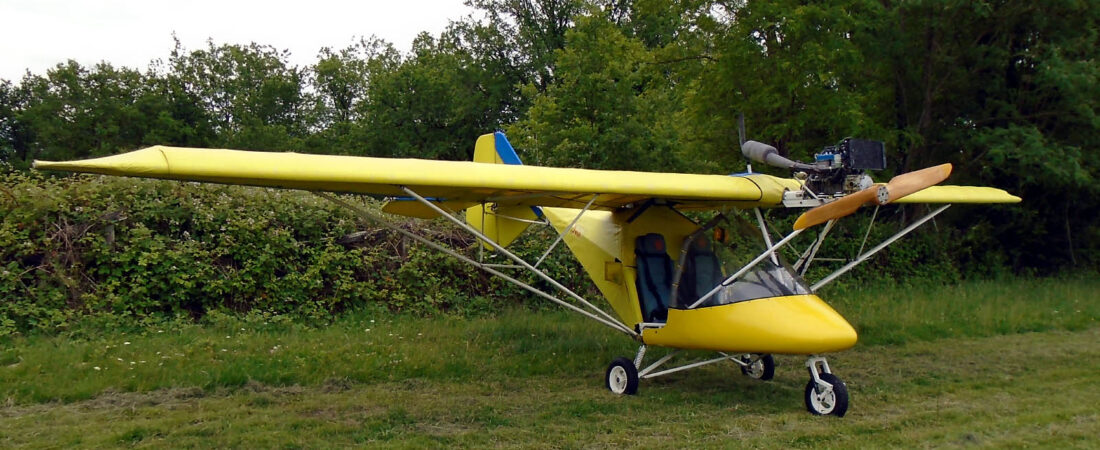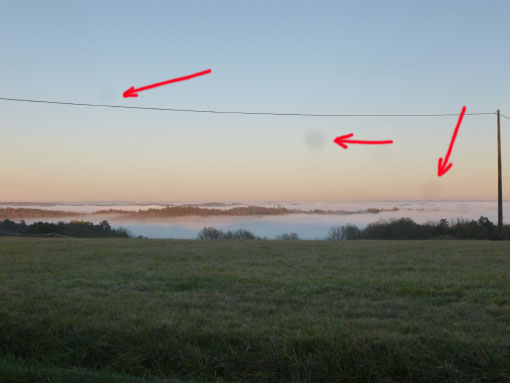When I first bought and started using my new little Panasonic Lumix DMC-SZ3 camera back in September 2013 I was quite fulsome in my praise for it. It was fairly inexpensive yet was quite capable of producing excellent images with its 16 megapixel resolution, 10x optical and 20x digital zoom and smart panorama facility to name just a few of its features. And with the Panasonic name behind it, it seemed reasonable to assume that it would continue doing so for some time to come if the old Pentax Optio that it replaced was anything to go by, which was still reliably performing after five or six years and having been bashed, scratched, dented and generally given a pretty hard time during that period.
Wrong. I first noticed that I was having problems with the Panasonic less than a year after buying it but didn’t understand why before it was too late and the warranty had run out. Here’s a pic I took with it of the vineyards outside St Emilion last September.
I didn’t spot the large blob marked with an arrow until afterwards and at the time I kicked myself because I thought that I’d been careless in not cleaning the camera lens. However, shots that I took later after carefully doing so showed that that wasn’t the reason after all. Here’s a pic that I shot of the valley across the road from my house in January.
Now not only were more blobs visible but they also became more pronounced if you zoomed in a bit to enlarge the image in the viewfinder.
So that’s when I contacted Panasonic support in the UK, as that’s where I’d originally purchased the camera. After going through the silly rigmarole of resetting the camera and trying again, which any thinking person would know would have no effect as the problem was obviously to do with the lens or picture-taking system, I was then asked to send some sample pictures after the re-set had been carried out. The following are two of the several that I sent that showed the problem and how it got worse when you zoomed in.
Since then all I’ve heard from Panasonic is a deathly silence, and I think I know why. If you do an internet search of say, ‘dark blobs panasonic photographs’ or something similar, you open a door to what is probably thousands of links from people with the same problem as I had. The problem is due to dust being sucked into the camera whenever it is turned on and the lens bellows operate, which then settles onto the CCD sensor. And not only that, if you do a more general search it seems, to me anyway, that Panasonic compacts are much more prone to this problem than other makes, so could this be why Panasonic support are now so reluctant to communicate with me?
But in any case, I’m not holding my breath. After completing my internet searches, I decided that as I already have a miniature screw-driver set, I’d have a go at following the instructions that have been posted by lots of people on how to take the camera apart and clean the CCD sensor. After all, it was unusable in its then present state and it hadn’t cost a great deal in the first place, so there was not a whole lot to lose. Here are a few shots that I took of it on my table in pieces. To get to the CCD sensor you have to take it apart and swing the viewing screen back out of the way, on its connecting cable.
The CCD sensor is mounted on the underside of the black plastic cover shown in the next shot and I hoped that I’d be able to get at it by removing the screws that are shown arrowed.
But it was not to be. The cover did indeed lift, but the CCD sensor was still attached to it in some way that I could not easily fathom. I carefully cleaned it, however, by reaching underneath the cover with a soft cloth and blowing a jet of air, and then I put the whole lot back together again and tried it out. The result was useless – the pictures that resulted were totally out of focus.
My conclusion was that the CCD sensor hadn’t properly seated when I’d screwed the black plastic cover back on again and that it was probably attached to the cover by the tiny torx head screws that are ringed in the above image. Victor kindly loaned me a miniature torx set but when I took the camera apart again, apart from finding that most of the securing screws that hold it together, which screw into plastic, had stripped nearly all of their plastic threads, I also found that the tiny torx screws just turned without coming out.
By this time I’d decided that such a cheap-and-nasty plastic design was just not worthy of all the effort, so whatever the outcome was of trying to align everything as best I could and carefully reassembling the camera, that would be it. Sure enough, although this time the test shots were in slightly better focus, they were still totally unacceptable for a 16 megapixel camera.
So what could I do? No-brainer, that one. Ditch the Panasonic and buy a Fuji Finepix JX660. It has less zoom that the Panasonic but for what I mainly will use it for, taking pictures from the aircraft, I don’t use zoom anyway. I liked the Panasonic smart panorama feature, which used the camera’s video system, but the Fuji has a different, albeit manual one that stitches together three separately shot images of the panorama, that seems to work pretty well. After my experience of buying a new Panasonic and being so badly let down, I got one second-hand from Ebay for peanuts and here it is.
So far, so good, although I’ve not yet had a chance to try it in the air where its image stabilisation system will come into play. When it arrived, I found that whoever owned it had only take 500 shots with it. When I checked, I was gob-smacked to find that I’d taken more than 10,000 in a year with the Panasonic and 5,000 in four or five years with my old Optio, so it just shows the effect that the internet/digital picture age has had on photography. I would guess that formerly, most cameras owned by ‘ordinary’ people, as distinct from photographers, wouldn’t take over 10,000 pictures in their whole lifetime, let alone in just a year. Even so, I don’t think that’s any excuse for the Panasonic Lumix to let me down after such a short period of time.
My conclusion – I’ll not be buying another Panasonic product of any sort, let alone another camera or video product. If they can’t make the effort to communicate with and support me when things go wrong, I sure as heck will not be going out of my way to support them 😐
















